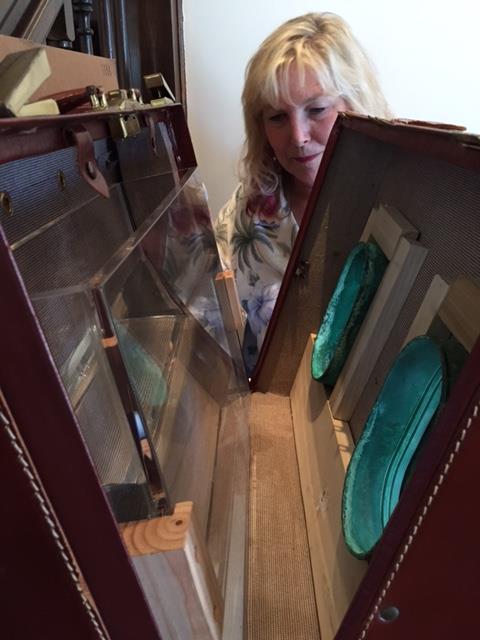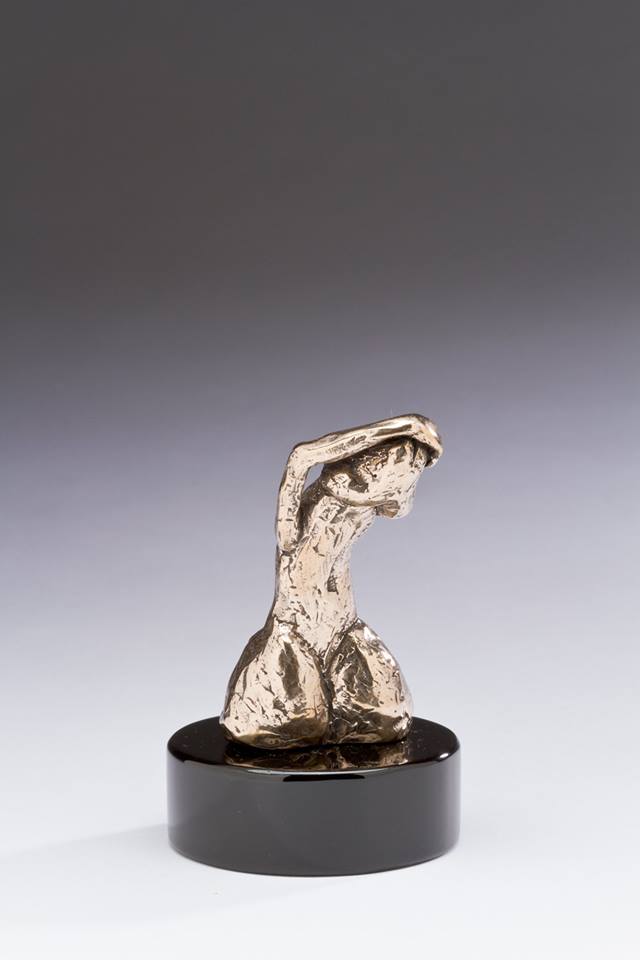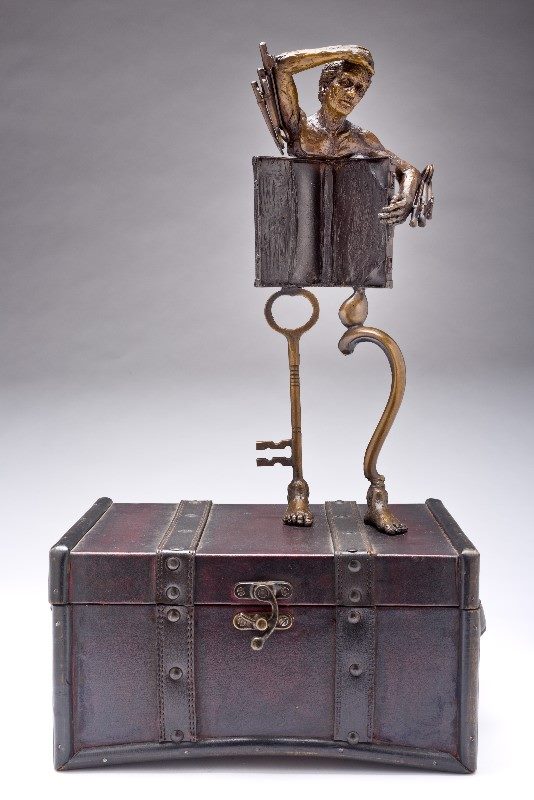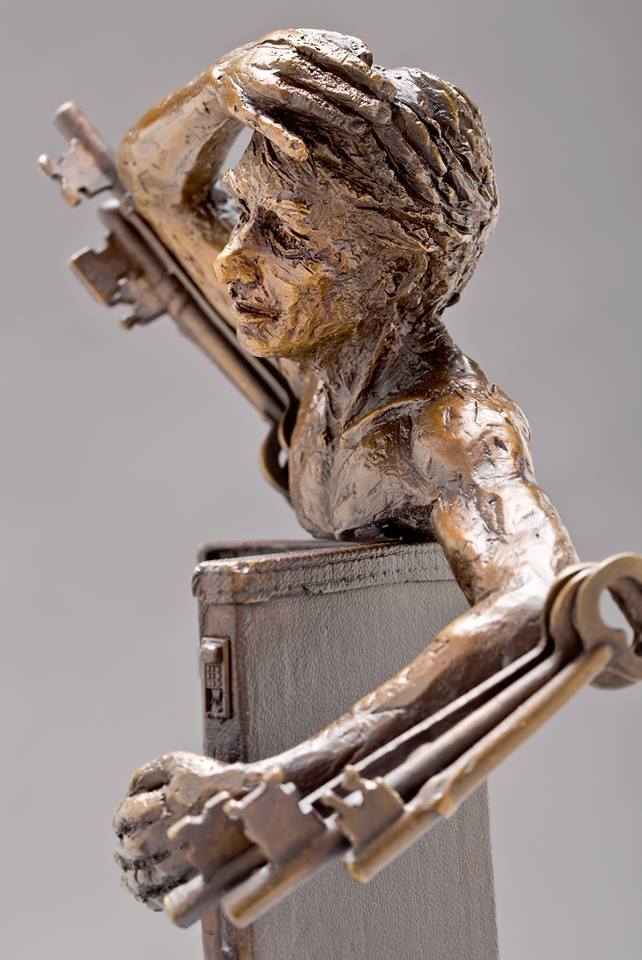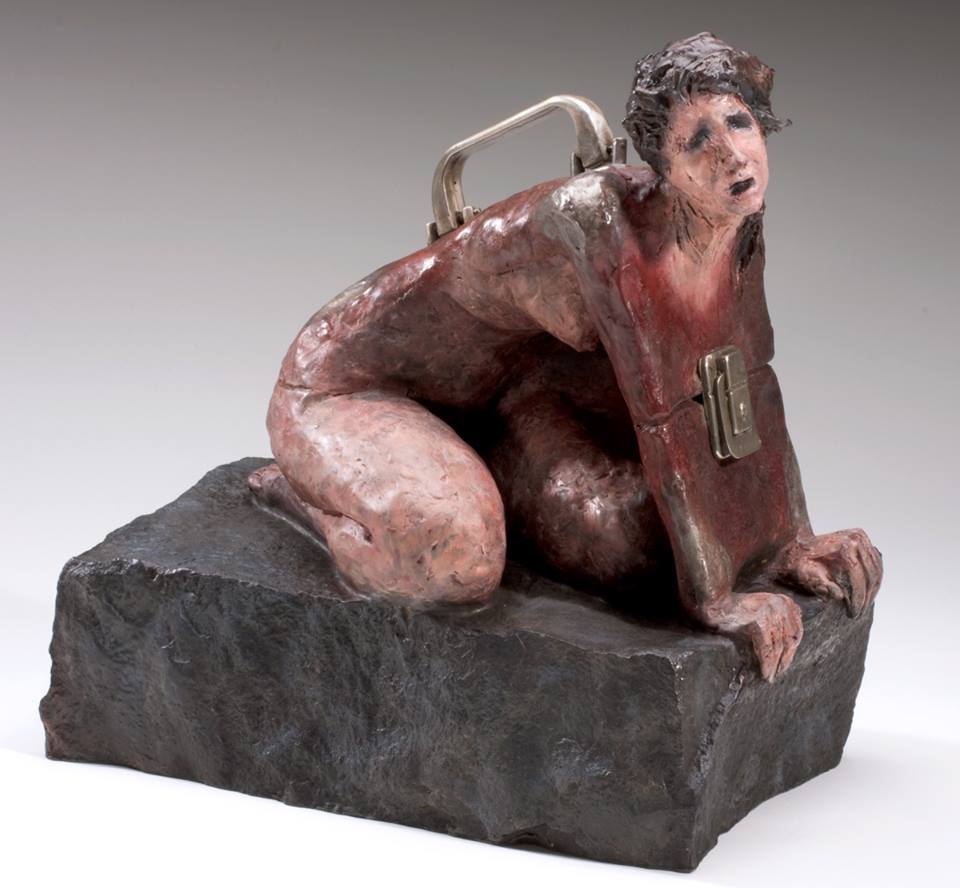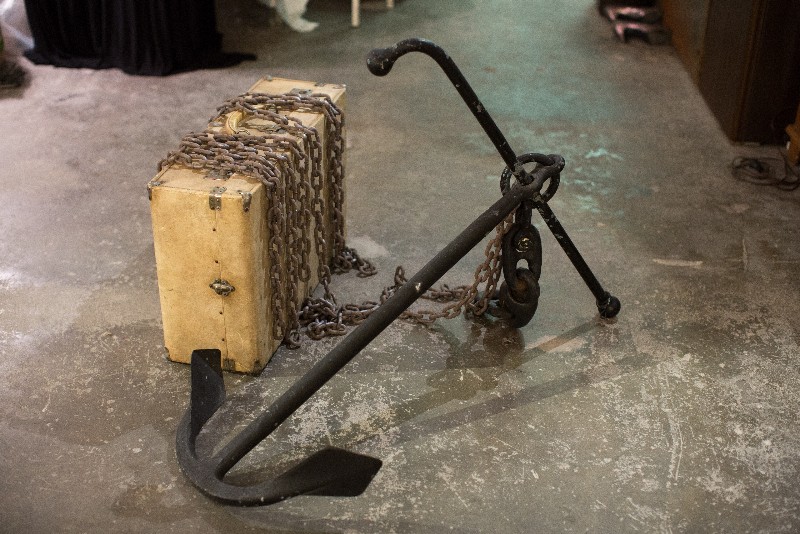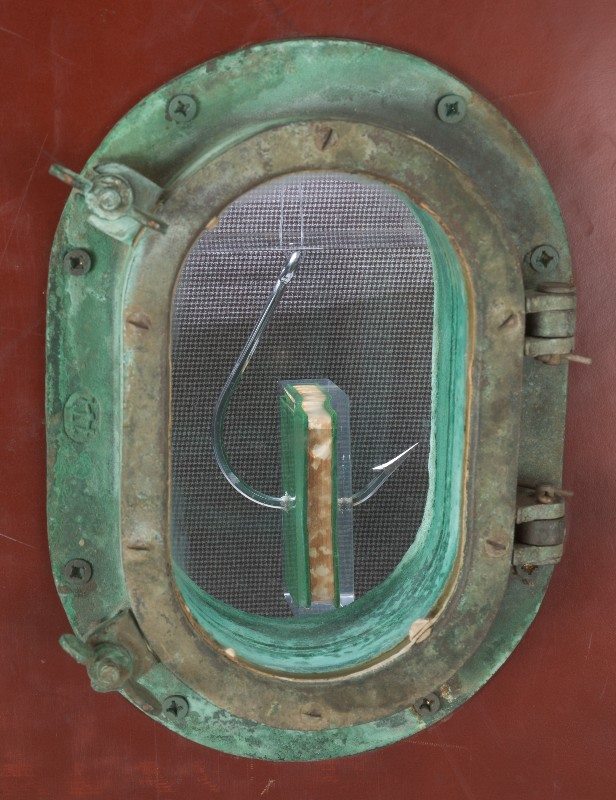Susan Amorde has a lot of baggage. Or rather, her art includes many works that feature suitcases, trunks, and briefcases as a part of sculptures that travel the distance – evocative, edged with mystery and a dark magic.
Suspended from the ceiling, or weighted on the floor, this luggage isn’t easy to unpack.
From sculptural works made with vintage suitcases to beautiful figurative works in clay, wax, bronze, and plaster, Amorde’s work is moody and emotional; she takes viewers on a journey that is both spiritual and literal. She takes on the metaphorical idea of baggage, and how what we carry with us emotionally can become what we are in life. Her work is often witty, with a double entendre rooted within its sculptural nuance. Below, for example, from her Dick and Jane series, is “Woe is Dick.” Amusing, scatological, and brilliantly anguished, this is a fresh take on what could very well be toxic masculinity as it affects its “owner.”
What travels through all of Amorde’s work is a muscular strength, a determination and a sense of a discovery. What is it that we find so precious, that we we must take with us everywhere we go? What is it that we find a necessity to bring with us, to pack away, to shape our journey through life, to shape us?
With “Mort’s Briefcase,” below, from her Baggage series, the artist juxtaposes the mixed media of a key and a wall hook with a beautiful sculpture of a man with his open brief case, standing on a small trunk. So much here: the secret content of the receptacle on which he stands; how his body has morphed into a series of objects – the key symbolic of the things he has long locked away.
Other, smaller keys are attached to his arms. Such weight: why do we lock away our secrets, and how do they continue to impact our lives even if we keep them out of sight? Amorde has said that “We as individuals, as well as society and culture, have baggage that we carry around and that either enhances or impedes our daily lives. I incorporate the figure with sculptures of suitcases or use mixed-media to explore how we feel about ‘baggage’ and what it looks like.”
At times, what Amorde seems to be telling the viewer is to really look inside that suitcase, to emotionally unpack. In other works, she’s showing us the richness of everything we carry, the wildness and passion of even our most fraught memories. There is a darkness and an edge to some of her works, as with her stunning “On the Edge,” below. Here a woman is weighted down, trapped under lock and key. She has literally become the baggage she carries and is in torment from it. Is her freedom just a flick of a lock away?
Weighted with an anchor and chain, the suitcase below is emblematic of more than just one individual, symbolic of modern life itself. The more we have to do, the more we may gain or lose, the more we have to hide. And whatever we’ve kept hidden gets heavier, and heavier, until what we are dragging with us might very well take us to the bottom of the sea and leave us to drown there. “Route 66 Anchor and Chains,” below, has an interesting title. Route 66, after all, was where we were to get our kicks, not our chains.
And once sunk under the sea, perhaps we are still “Drowning in Indecision,” the title of the work below.
Amorde’s series of water portal sculptures are especially beautiful, the liquid sections of each piece feel illuminated with light. Perhaps once we drown what we carry we can finally be made free. Or perhaps we are still on the hook for our burdens.
Her “Wounded Baggage,” above, is classically framed, shot through with bloodied arrows. We can try to kill the demons that we carry, but yet they bleed.
One of the many fascinating things about Amorde’s work is how many questions her art raises. She gives us no pat replies: we are finding insight more than answers.
This is an artist ready to travel, taking viewers on a long and internal journey with her and her art. To quote The Beatles “Boy you gotta carry that weight/carry that weight a long time.”
Amorde’s profound, anguished, and rich art might just help lighten the load.
- Genie Davis; photos: Susan Amorde, Genie Davis



